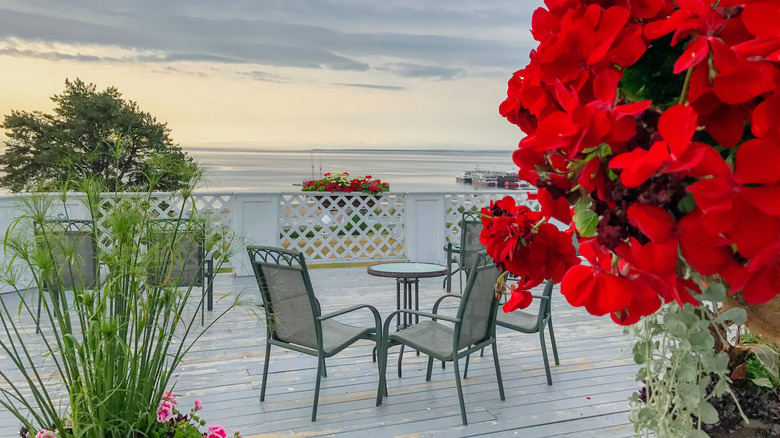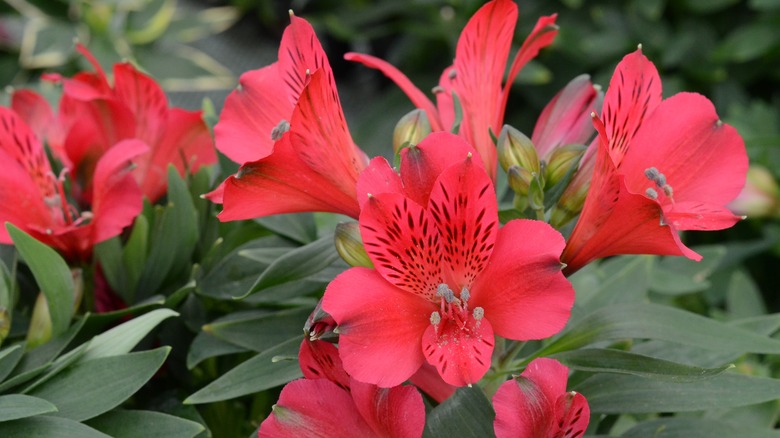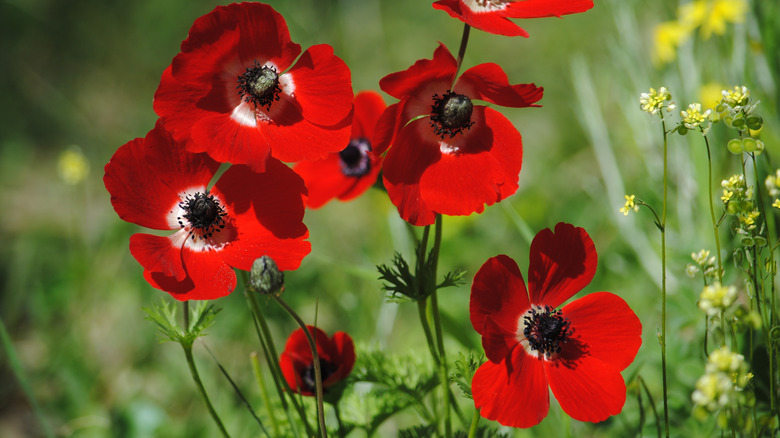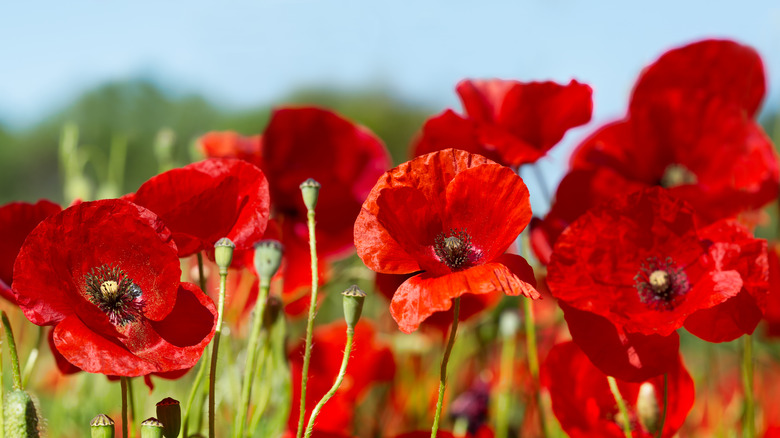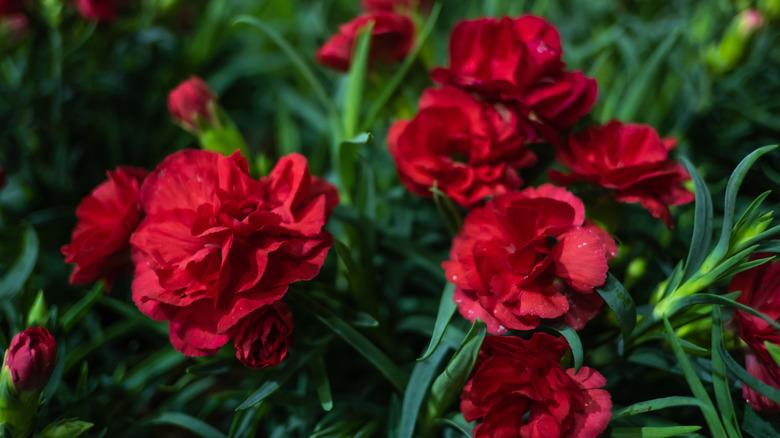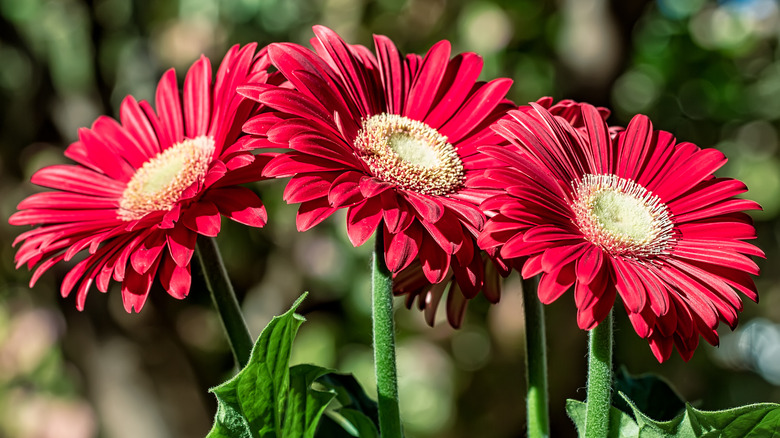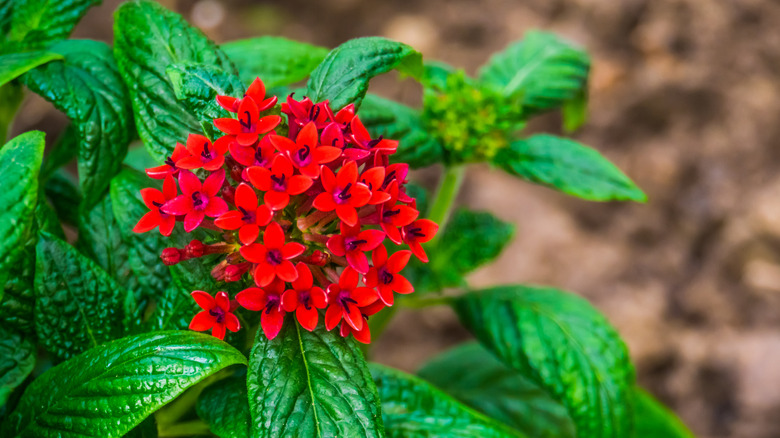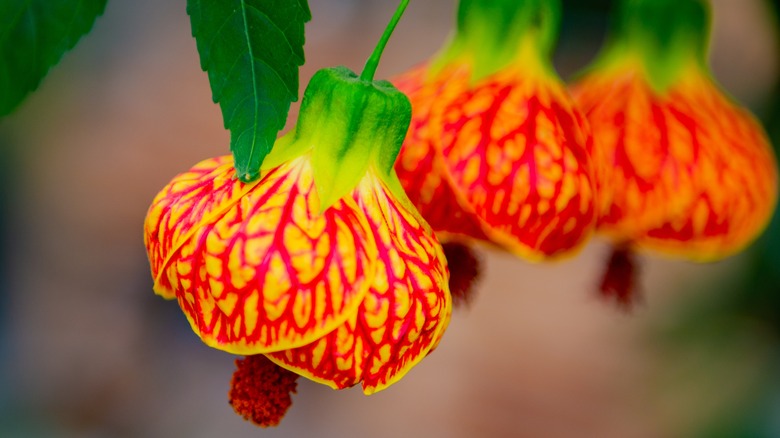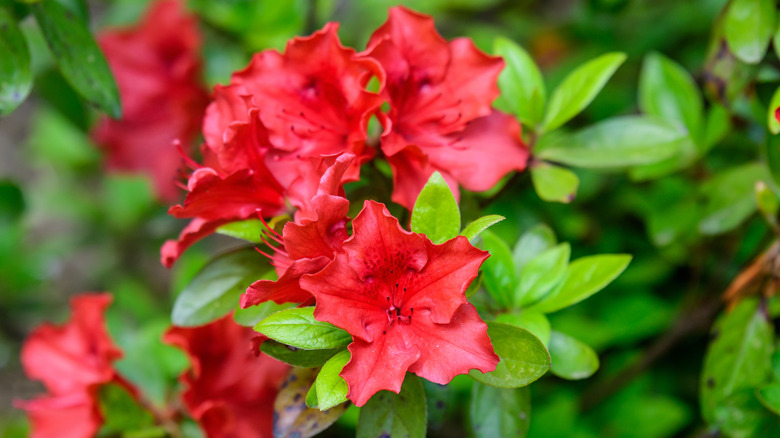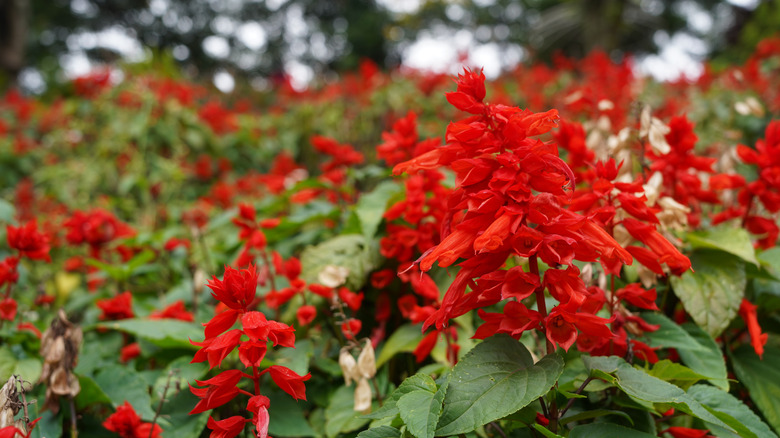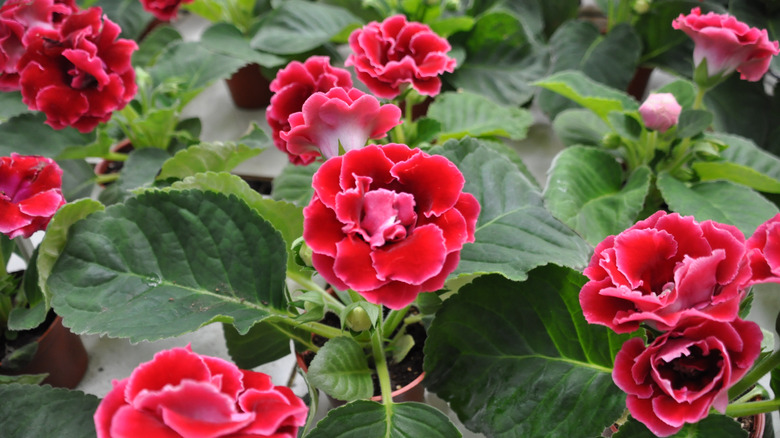10 Red Flowers Perfect For Hanging Baskets
"The power of color. It makes such a difference in every design," explained Leanne Kessler, director of the Floral Design Institute, in a lesson on color theory. As with most things, trends come and go in garden design, and that includes small, combination arrangements like potted and hanging plants. Orange might be a hot color one summer and yellow the next, but red ... red is timeless.
Red can be both spicy and welcoming. It reminds us of love and passion ... and of possibility. It's an exciting color that is both traditional and bursting with panache. The direction it takes depends on the plants you choose for your arrangement. Choice of color in design is a statement; adding red flowers to your hanging baskets can take your décor to the next level. Whether you choose exotic scarlet blooms, deep crimson buds, or sweet blossoms with subtle reddish hues, you can create an amazing floral display that will last throughout summer or longer.
Alstroemeria
Alstroemeria (alstroemeria) flowers feature fancy petals that are flecked or streaked with darker pigmentation. Peruvian lilies or lily of the Incas, as they are sometimes called, per ProFlowers, are perennials that can be overwintered in dry pots for replanting in spring. Dwarf varieties exist and are a great addition to flowerbeds and containers. These flowers blossom toward the beginning of the summer and may endure into autumn.
- Bloom Season: Early summer through fall
- Soil Needs: Well-drained
- Sunlight Needs: Full Sun/partial shade
- Growing Zones: 8 to 10
Anemone
The many colors of anemones (actiniaria) make them popular among gardeners. A diverse species, some bloom in spring while other varieties do so in autumn. According to BBC Gardeners World, these plants don't demand much fuss aside from regular watering. Left to seed, they may spread over time on their own. Their tubers can be stored through winter for replanting in springtime.
- Bloom Season: Early spring through fall
- Soil Needs: Moist, well-drained
- Sunlight Needs: Partial shade
- Growing Zones: 3 to 9
Poppy
Poppies (papaver), with their long stems and fierce red petals, bring a huge pop of color to any arrangement. Self-sustaining, they are able to reproduce and self-grow each year without much help. As noted by Love the Garden, these beauties thrive in slightly dry soil. An interesting fact about these stunners is that, according to the BBC, they populated battlefields because of the lime left behind in the rubble.
- Bloom Season: Early spring through fall
- Soil Needs: Well-drained
- Sunlight Needs: Full sun
- Growing Zones: 2 to 8
Carnation
Long-stemmed and colorful, carnations (dianthus caryophyllus) are perfect for filling up hanging baskets adding height, allowing other plants to trail over the edges for an attractive display. According to Leafy Place, they require minimal care and love to soak up the sun. Removing dying flowers promptly will be rewarded with plenty of additional blooming.
- Bloom Season: Early spring through fall
- Soil Needs: Moist, well-drained
- Sunlight Needs: Full sun/partial shade
- Growing Zones: 3 to 10
Gerbera daisy
Cheerful is a good way to describe Gerbera daisies (Gerbera jamesonii); they were first grown on the African continent, but are now found in places around the globe, as noted by FTD. They are happy indoors or outside and prefer to be deeply watered in the morning. They look great as an addition to a hanging basket and also work beautifully in cut bouquets.
- Bloom Season: Early spring through fall
- Soil Needs: Well-drained
- Sunlight Needs: Full sun
- Growing Zones: 9 to 11
Pentas
Pentas (pentas) are prized for their spectacular, star-shaped blooms. Pollinators, butterflies, and hummingbirds can't resist them! They can be planted as an annual or a perennial in warmer zones. The blooms come in a variety of shades and grow in clusters. Per Plant Care Today, pinching the stems and selective pruning will encourage healthy, full growth.
- Bloom Season: All summer
- Soil Needs: Moist, well-drained
- Sunlight Needs: Full sun
- Growing Zones: 10 to 11
Abutilon
According to the Wisconsin Horticulture Division of Extension, abutilon (abutilon) are often referred to as Chinese lanterns and sometimes as flowering maple because their foliage resembles maple leaves (although they are unrelated). This evergreen perennial is often enjoyed as a houseplant or annual in the Midwest. Blooming occurs from late spring-summer to the first frost and once well-established, these plants are fairly temperature and drought-resistant, shares Gardenia.
- Bloom Season: Spring through fall, multiple blooms
- Soil Needs: Sandy, loamy
- Sunlight Needs: Full sun/partial shade
- Hardiness Zones: 8 to 10
Azalea
Per ProFlowers, there are more than 10,000 official types of azalea (rhododendron), and these beautiful blooming plants are often called the Royalty of the Garden. Blossoms can have rounded petals that overlap or longer, narrow petals, depending on the type of azalea. These plants grow well indoors or outside as long as they aren't in the sun or shade all day.
- Bloom Season: Early spring to fall
- Soil Needs: Well-drained
- Sunlight Needs: Partial shade
- Growing Zones: 4 to 10 (best in 6 to10)
Salvia
While red is a fantastic color of salvia (salvia), it also grows in blue, pink, white, purple, and yellow. These gorgeous mid-summer blooms are a favorite for hummingbirds, butterflies, and pollinators. Salvia comes in annual and perennial varieties and tends to be heat and drought-resistant. Almanac recommends ensuring the pot is able to drain well by first adding grit to the bottom of the compost or soil before planting.
- Bloom Season: Late spring through fall (if faded blooms are cut back)
- Soil Needs: Well-drained
- Sunlight Needs: Full sun/partial shade
- Growing Zones: 5 to10
Gloxinia
Creeping gloxinia (gloxinia) are hybrid annual plants that go great with other trailing-type plants such as lobelia and geraniums, according to the Cape Gazette. These beauties grow quickly, producing many blooms that last about two months. They're great for hanging baskets because they will eventually cascade over the sides. They thrive on high-phosphorous liquid plant food and do well indoors or outside in warm months.
- Bloom Season: Summer, typically two months
- Soil Needs: Moist, well-drained
- Sunlight Needs: Partial shade
- Growing Zones: 5 to 10
